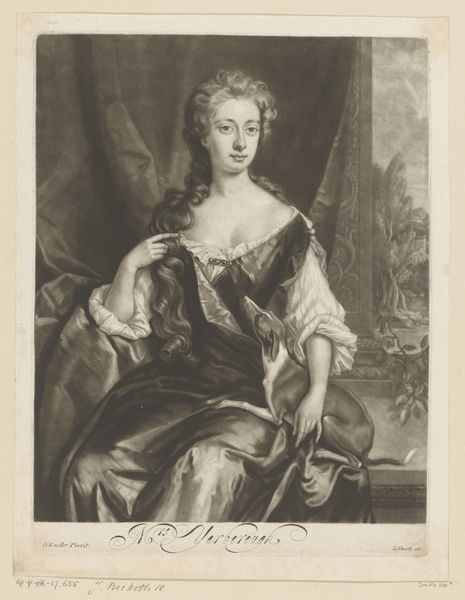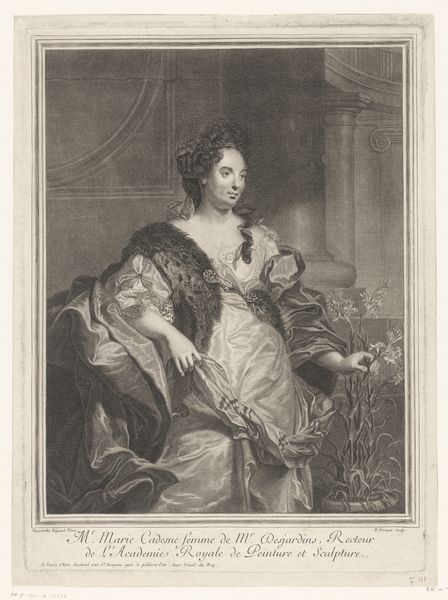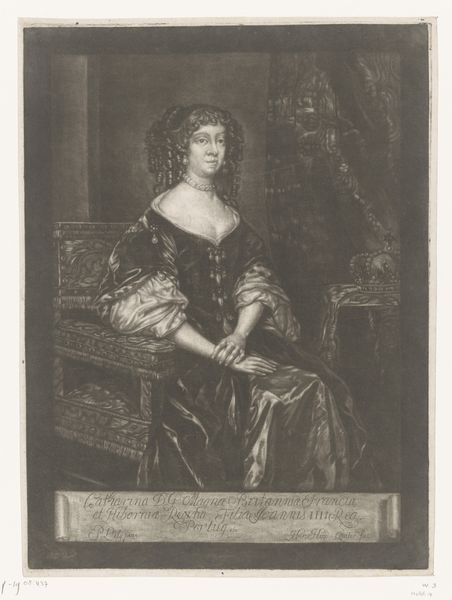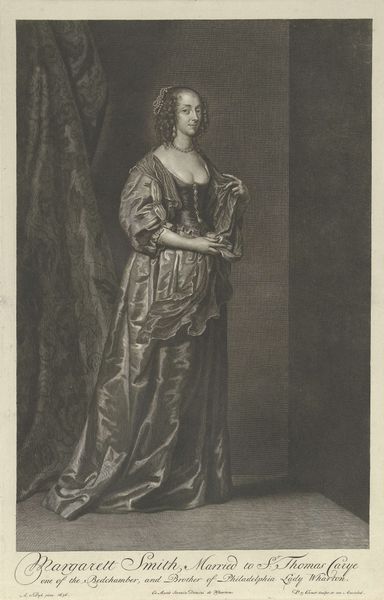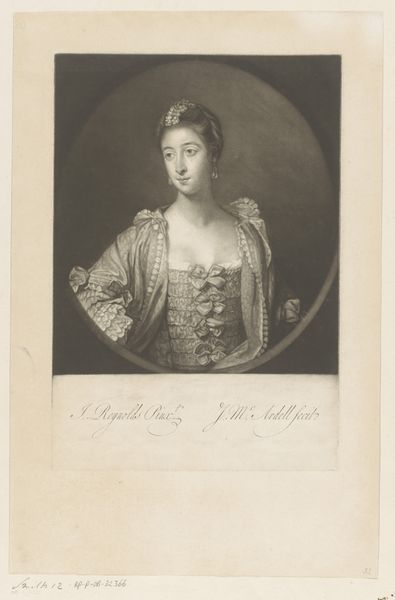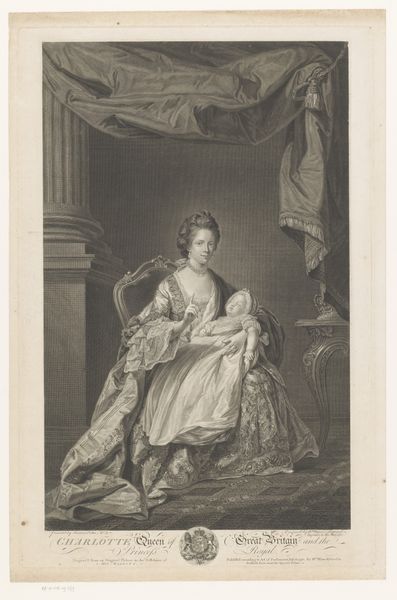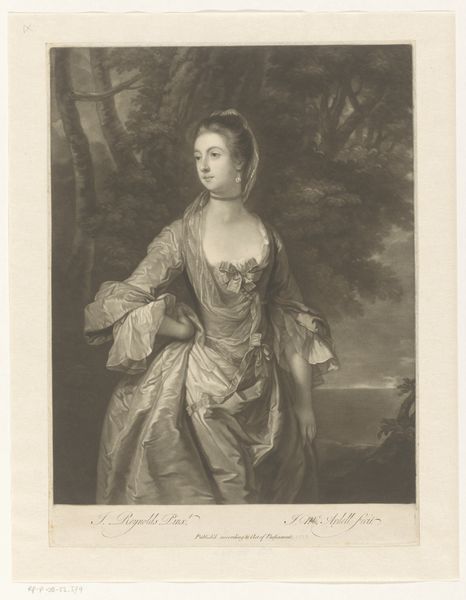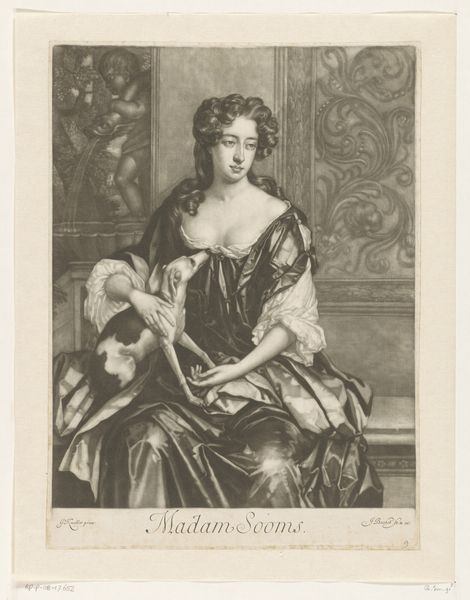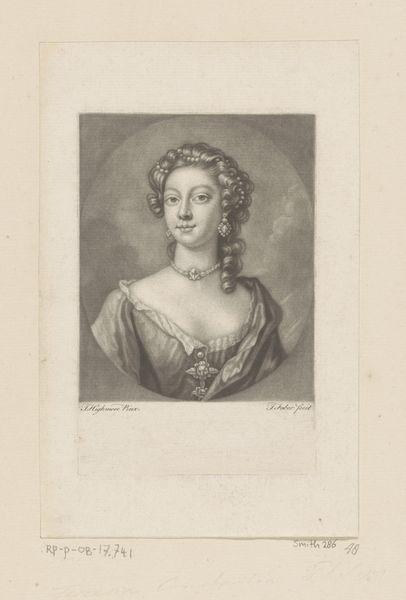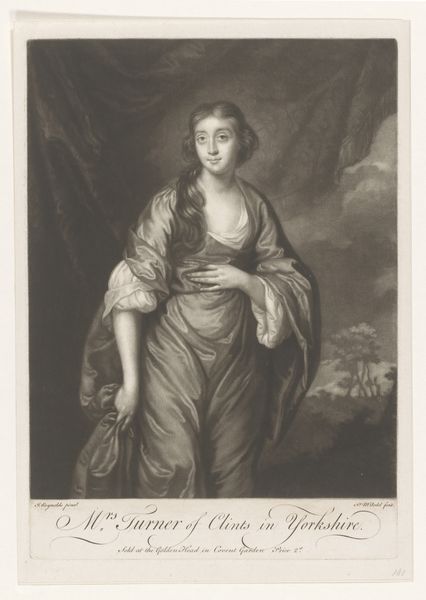
etching, engraving
#
portrait
#
baroque
#
etching
#
history-painting
#
engraving
Dimensions: height 337 mm, width 250 mm
Copyright: Rijks Museum: Open Domain
Curator: Before us, we have a print executed between 1681 and 1683 by Alexander Browne, entitled "Portret van Henriëtta Maria van Frankrijk" depicting Henrietta Maria of France. It resides here at the Rijksmuseum. Editor: The first thing that strikes me is the subdued atmosphere. It feels very stately, but with a hint of melancholy, almost resignation, even though the composition places her centrally and elevates her status. Curator: Exactly, we must acknowledge the turbulent history of the Stuart Dynasty during this period. This piece serves not only as a record of status but arguably an attempt at restoring a fragmented sense of political might following the Restoration of the monarchy. The print captures the likeness of Henrietta Maria, Queen consort to Charles I, whose reign culminated in civil war and ultimately his execution. Editor: Yes, understanding the public role of portraiture at this time really contextualizes how carefully controlled these images were. Think about the setting—the draped curtain, her attire… and isn’t that the royal crown resting nearby? It's meticulously staged to evoke a specific image of regal power, despite what was likely a sense of fragility. Curator: The inclusion of the crown as you pointed out reinforces a statement of legitimacy—a strategic placement in the frame indicating hereditary rule in the face of significant political challenge. One notices, too, Browne’s medium choice – the engraving – as enabling dissemination through mass production. In what ways might the piece have perpetuated, or alternatively complicated gendered ideals through its wide reach at the time? Editor: I agree. Perhaps, for viewers then, this artwork served as both a memorial and as propaganda for a family that sought a particular type of stability. Seeing this portrait now allows us to examine those historical social and political influences with great scrutiny and care. Curator: Indeed. It is crucial for viewers today to comprehend how artwork depicting royalty functioned to shore up institutional authority. Browne’s engraving speaks not only to personal history, but equally, to the history of monarchy. Editor: Absolutely.
Comments
No comments
Be the first to comment and join the conversation on the ultimate creative platform.
